Have you watched the movie animation entitled The Lorax? It's a terrific and engaging film that explains how we should stop from our wrong doings that greatly affect the environment, or else it will be too late for us to recover it. Actually before it became a motion picture, it was already published around the year of 1971 and is written by none other than Dr. Seuss. He might have a vision of the possible situation that our environment will suffer from today's generation, and so he does wrote the book. The Lorax is just one of the nicest book and film that parents should invest for their kids, especially if they want to let their kids engaged to environmental responsibility. Unless we teach the next generation how to take care and protect our planet, stories like this can be never ending. There's also this book entitled - The Adventures of Aluminum Can : A Story About Recycling by Allison Inches, that will certainly make your kids a recycling enthusiast. It is a story about an aluminum can that goes on a journey and exciting travels, until it finally reached a recycling plant where it found its new life as a baseball bat after being recycled. The plot was definitely suitable for kids, with adventures, humors and moral lessons that point out the ecological significance behind each product and resources. As much as I wanted to enumerate all those nifty books, it'll take much time and of course pages on my blog that I might end up having a catalog. Kidding aside, I'll let you posted of more book titles and movies that will help your kids as well as everyone to become environmentally responsible and cherish the goodness of what the environment gives to us. For eBooks you can check out Apple Store or Google Play for downloadable free versions. While for printable versions, I'll browse the net for some free copies and will update you guys through this post, so you wont have to spend time and money looking all around the bookstores for a copy. Always make sure your printer is good and ready for a batch of prints to avoid any delays and downtime. Also, practice green printing with your family by using recycled toner cartridges and ink cartridges to your printer, so Dr. Seuss wouldn't chase you for your wrong doings.
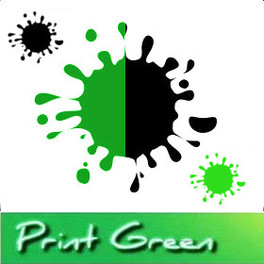 Green is the new black, a simple yet meaningful line which I've read while browsing the net for some information that I might use for my post. Indeed, we've been printing in black as well as in full color, but that was just before, since the print industry especially its market is now offering a few environment friendly consumables for every printer. There we have the bio-based inks which are made from natural materials from crops like soy, developed and process to produce greener printer cartridges out of these abundant crops. To help you decide on whether to use them or not, let me give you a short list of facts that soy-based inks provide. - Approximately, 2 liters of petroleum products can be saved per pound of soy toner.
- Soy inks and toners are made from fully renewable resources.
- They're generously cheaper and performs of par with their OEM counterparts.
Well aside from soybean-made inks and toners, there are these so called remanufactured toner cartridges and ink cartridges. Although these cartridges may not contain soy-based material inside, their tanks are mainly made from used and worn out components of OEM products. OEM are original equipment manufactured consumables for printer, in short they are highly-priced and will cost your printing expense to increase in the long run. What makes these remanufactured cartridges green as well? Of course through recycling used and empty printer cartridges, it reduces landfill wastes and preventing those materials from ending up in incinerators. Burning plastic and petroleum-based products will accumulate more air pollutants that will only bring more trouble for the environment.So is it now clear why GREEN is now the new BLACK? We may have been using monochrome ink/toner when printing, but if the cartridges we used are either recycled or contains bio-based material, then we are printing in green. It's not too late to make a switch, and it can never be too late, unless you won't do anything at all. Do your part for the environment and contribute on promoting green printing practices through using recycled printer cartridges as well as bio-based inks and toners.
With the strikingly high prices of OEM printer consumables in the market, no wonder why most customers are opting for the alternatives and making a switch. Some were trying it as a temporary solution on their mounting printing expenses just to give it a cut, and eventually they end up liking the product, thus using it for good. Breaking the category of printer cartridges into two such as the OEM (original equipment manufactured) and the non-OEM (remanufactured by third party). Are you also familiar to the two types of non-OEM? These are the compatible and remanufactured cartridges, either ink or toner, it applies to both. How can we differentiate one from the other, or should we say is there such a difference between these two products? Let's try to find out by giving you guys a brief description about these third party printer consumables. Starting with the remanufactured cartridges, as I myself use it with most of my printers at work. Not everyone who uses it knows that they are actually made from worn out or rather used tanks of original cartridges. For example, if you've got a lot of empty Lexmark toner cartridges or ink cartridges, you can send them out to your respective manufacturer for recycling purposes. That's right, just like any other plastic bottles out there, toner and ink cartridges are also recycled, thus producing remanufactured cartridges. Why are they cheaper if it's also made from original materials? Simply because, it doesn't require them to use virgin materials for the production, instead they utilize those returned cartridges from their customers, saving them time, money and energy. Now with the compatibles, these are literally third party products. Although they not substandard, I mean it depends on the quality testing they run. Anyhow, unlike with remanufactured cartridges, compatibles are brand new printer cartridges, but not branded. Manufactured on a different process over OEMs, yet still they work and function the same way as branded cartridges do. Whilst it provides similar benefits like remanufactured, which is to give savings to all consumers. However, if we're talking about which is more environment friendly, I'd still go for the remanufactured toner cartridges and ink cartridges, since they're made from use materials instead of new resources. Occasional errors and print failures is inevitable, whatever type of cartridges you're using, believe me, any remanufactured or compatible cartridge may lead to print problems as much as OEM products might cause. So which one is more preferable on your choice? Regardless of what type you choose, or you would still like to stick with the OEM, please do recycle your printer cartridges as much as possible, to protect the environment.
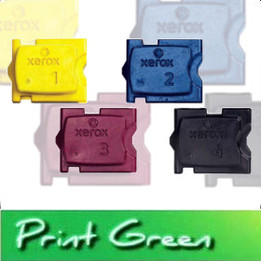 Is it really possible to have a conventional printer that doesn't require to use ink cartridges? Well, Fuji Xerox, one of the known brand manufacturer in the print industry, announced last January that the company was planning to launched a complete range of business printers that features cartridge-free printing. It's more than just a good news, especially to most environmentalist who are promoting waste reduction globally. Developing a printer that requires no ink or toner tanks will greatly contribute on diminishing overall collected waste that the print industry produced.According to the news, the first printer that will be released from the said range will be the ColorQube 8900, which instead of using cartridges, it will use four solid blocks of ink (black, magenta, cyan, yellow) called ColourQube technology. The science behind this blocks of ink is more likely similar to toner particles used in most laser printers. The blocks will melt down through heating, to draw images and texts on paper material. The printer will still use inks although in a solid form, through this technology the need for a cartridge to house the inks can be totally eliminated. This is a remarkable achievement that Fuji Xerox has developed not only for their company but also to the Printing Industry as well. I'm pretty sure with the emergence of ColourQube inks, some printer manufacturers particularly the tech-giants in the industry will soon come out with their own versions.ColourQube inks contained 30% bio-derived renewable material, which results to achieving a complete certification from NAPIM - National Association of Printing Ink Manufacturers. It's ecological benefits are truly exceptional, way better to the derivation of remanufactured toner cartridges and ink cartridges. Although these recycled cartridges can provide positive effects to the environment, still it uses plastic materials for the manufacturing process, yet with ColourQube there's no plastic at all. Consider your printer having blocks of four crayons, isn't it unique to buy replacement crayons for your machine? This particular technology is nothing new to Fuji Xerox, but for us who haven't seen it in action I'm kind of thinking to switch for a new printer, however, upon checking the market price of ColorQube 8900, $5500 really surprised me. I guess I'll suit myself with using eco-friendly printer cartridges for the mean time.
Anyone who knows Hong Yi? Well, she's a mixed media artist, commonly known as "Red", she can use anything as her medium to create wonderful art works. Featuring her on our blog was truly an awesome treat for all my readers, so without further adieu here's her new masterpiece. It all started when Red accepted HP's challenge to her by using an HP printer, a single ink cartridge particularly the one that comes from Ink Advantage series, and a pack of A4 plain papers about 1500 sheets. HP was so excited just like all the other people waiting for her creation, and after Red was finally done with her project, everyone was startled with the elegance and simplicity of an astonishing portrait entitled "The Soaring Bird". It was all made through scanning real feathers using the HP Deskjet Ink Advantage 2520HC printer equipped with a single ink cartridge, and printed the scanned images to almost 1500 paper sheets. With all those thousands of printed pages, laying them out on the floor and playing with it just like a jigsaw puzzle, requires a lot of patience and of course talent. Using stuffs that we regularly use everyday, whether in the office or at home, who would have thought that with just a big creative idea, one could make an astounding work of art. Red's artistic view was truly amazing, I wish I could have the same talent and bright ideas just like her. HP was so proud to say that Red doesn't encounter any paper jams or clogged print heads while doing all the process of scanning and printing those images. It's like she gave the device a new purpose, that it can't only be use just for printing our office files and documents, school projects, and many more. Honestly it was a noble idea and I commend her a lot for doing such a great job. Now I'm wondering what to do with my printer later, maybe I'll start first with thinking what portrait should I make. I'm thinking if my printer is ready enough to face my challenge, guess I need to go downtown for some replacement cartridges. Though we are using remanufactured toner cartridges and ink cartridges, I don't think it would matter, as it can match up with OEM products. Got interested to Hong Yi? Visit her official website to see more of her wonderful jaw dropping works of art : redhongyi
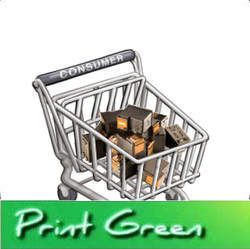 From candles to light bulbs then LED lights, the evolution was awesomely rapid. Through necessity, inventions and alternatives emerged, and innovation will never end, as long as there is demand. Consumers never run out of anything to request, from product to price they always want everything to be readily available. If the price of a product increased, there must be a low-priced equivalent. That's where the market for recycled and compatible consumables were born. Actually it's not hard to imagine how such commodities and supplies had reached the market, it was the consumers demand that triggers them to enter a wider industry. I mean they're existing for so long, but not everyone knows about it, until such time when manufacturers intend to boost their profit through price hiking. That's the cue they're waiting for, and without us noticing it they became a common product in the market. It is because of the consumers demand, asking for less expensive commodities and supplies that companies as well as some manufacturers tend to developed cheaper supplies as a response. One good example to cite is the market for recycled printer consumables such as eco-friendly toner cartridges and ink cartridges. As we all know, OEM or branded printer supplies are typically high-priced, and the consumer's last resort is to opt for alternative products. Surprisingly, that's what happening right now in the Print Industry, since printer manufacturers are selling expensive toner and ink cartridges, their consumers are now switching to recycled cartridges or as they called it as compatibles. The situation can't be helped, unless those branded manufacturers will cut down the price of their products.Switching for the alternatives isn't that awful, and it's not really bad actually, cause you get savings while being environment friendly at the same time. There are organizations promoting the use of recycled products and recycling as well, participating on such activities and programs will certainly help improve the environment.
Have you ever wondered if there could be a possible thing that you can do to at least extend the life of your printer's consumables such as toner cartridges and ink cartridges? Actually there are ways and steps that any printer user may refer to make their inks and toners last longer. Once you start doing the suggested list below, you'll probably save and cut down your printer's operating cost in the long run. Reduce Printing in Color ModeAll printer users know that color cartridges are typically expensive compared to black, hence replacing each color will accumulate much expenses. Though there are printers that use single cartridge for three colors, still they are highly expensive. So the only way to lessen the cost of purchasing replacement color inks/toners is to use it only when necessary, actually it's more of like a common sense advice, and it also applies with the black consumables. If you're using color printer, set the printer to print only in black. Read before you print.Proofreading is always neglected by most, especially to those who don't even care of the inks/toners they consumed during printing drafts. It's natural for anyone to have mistakes or errors with their documents or paper works, but it's not ideal to print it without proof reading. You're not only wasting the paper sheets but also the inks/toners of your printer, and also power supply. Make it a habit to check each page and proof read your work before printing. Use your printer at least once a week.If you think that just because you let your printer unused for more than a month or two will save you from the amounting expense of buying replacement cartridges, the you're wrong. Actually you're causing much trouble to your printer, the inks or toners may build and dried up inside the machine and eventually it will result to more serious damages. Once the cartridges dried up, they're useless and the only way to make your printer work is to buy replacement cartridges, in short expense. If you hardly use your equipment, it's not a solution to avoid buying replacements. Consider the alternatives.OEM cartridges are highly-priced, we can't blame them business is business. But we can find way to reduce the operating cost of our printers, through using recycled toner cartridges and ink cartridges. These products are made from components of branded ink and toner tanks, refurbished and refilled with third-party mixtures. Less expensive yet they can deliver exactly the same performance like its counterparts, although there's a slight difference in the resolution and quality. But it's a fairly reasonable trade-off considering the cut in price.
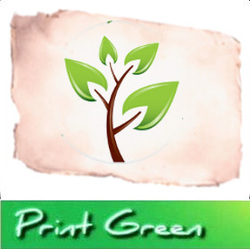 Paper materials as we all know are products of the environment particularly the trees that long been growing from all places around the world. At present, there are these organizations and movements that promote reforestation as well as protecting the trees from illegal loggers. Through these efforts, all the living things thriving in every forest and similar habitats, still manage to live in peace.
It's been a long time ago, and still counting, when paper materials were created from tree pulps and other wood materials. Now the consequences are manifesting, problems with the ozone layer, carbon emission, unpredictable weather, and so on. Only because the number of trees around the world are not enough to filter what needs to be filtered. It's kind of annoying that people already know these things, yet they're not actually exerting efforts that much in order to stop it or at least reduce the effects.
Back to paper materials, before the only way, as I remember, from which papers can be made, was through extracting pulps from trees, processing it and adding chemicals, then there we have it. Of course I won't go into much details about the whole process, it'll take much time telling you everything. But that was before, cause nowadays, paper materials can now be made through different alternative resources, and believe it or not, even rocks/stones can also be a possible source.
Environment friendly companies including EcoSource and ACT came up with such great ideas to utilize all possible resources which can be used for the production of paper materials. Such resources include banana leaf, flax, and garments - they may sound quite unusual but still it works. There's also this plastic-paper material, it's actually a printable material that can be used for printing purposes, and it can even withstand heat that generates from laser printers.
There are so much of them that I want to tell you guys, but as I remember I've made some post related to this topic, about papers made from rock materials, and many more. Also, I have all these recycling ideas and contents related to conserving paper materials, even hand crafts and fun learning projects that uses paper products. Just feel free to browse my archive.
In addition, Neeha Paper also offers alternative paper products made from real bamboo, cotton and even tortilla, that sounds tasty isn't it, I mean the tortilla paper, just kidding. Propal paper Mill also offers office paper made from sugar canes, suitable for laser printers and everyday use. All these eco-friendly paper materials are great alternative for everyone's daily printing and paper needs.
Also, recycling can be one of the easy way on how we can preserve the natural resources and materials that are typically use for producing paper products. Printing practices can also be altered to a more green and environment friendly where each and everyone in the office can minimize the use of such materials. For a far better printing, use recycled toner cartridges and ink cartridges to save your hard earned money and have a greener working environment.
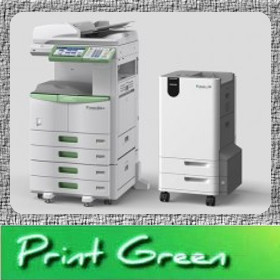 It's kind of a bit late to feature this printer since it was actually announced last year. But according to a release, it was scheduled to hit the market by February 2013, so still we're not too late. Since it is committed to promoting environment friendly printing, I'll give the spotlight of my today's post for Toshiba's e-STUDIO 306LP MFP printer. The e-STUDIO 306LP MFP printer is accompanied with e-STUDIO RD30, which will do the magic of erasing the prints in the printed material. Toshiba came out with a special type of toner that can be erased through the use of the e-STUDIO RD30. Passing the printed material through the RD30 will remove the text, images, graphics and etc., at a high temperature. Additionally, aside from its magic trick to erase toner prints, the RD30 has also the functionality to sort paper materials as to which are reusable and non-reusable sheets. It also feature an Eco-friendly aesthetics suitable for offices and similar working environments. Designed with practical and efficient business-oriented functionality and features, the e-STUDIO 306LP provides a business printing solution that works with a new style. It can effectively encourage its users and all the other employees from the office to reuse paper materials particularly the ones they used mainly for printing purposes. Through the Intelligent Green MFP Technology, plus the built-in erasing system, users can refill the printer's paper tray for more than five times using the same paper materials. These wonderful features can greatly reduce their office's paper and printing cost by nearly one-fifth less of their current expense. Well since I've heard that the e-STUDIO 306LP MFP will first invade Japan, therefore rolling it out worldwide is not yet confirmed. For those who just want to stick with their conventional printers, to go GREEN they can switch to using eco-friendly toner cartridges and ink cartridges to contribute to sustainable development. There are ways and options that any office or business can try for their printing needs, that aside from cutting down their printing expense, their company also contribute on diminishing the ecological impacts of using high-priced printer consumables.
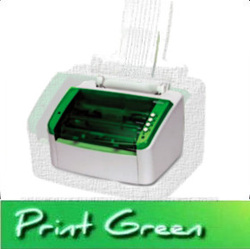 PrintGreen have already featured similar devices like the one I'll be featuring for today's post. However, since there are so much of these wonderful inventions that promotes green and beneficial printing, I'll try to feature them here in this blog as much as they can fit. Here's another eco-friendly printing buddy that we should look at, the PrePeat printer. Developed by Sanwa Newtec, claimed to be the most ecological friendly printing equipment, although every developer do said that, let's not spoil the moment. Anyway, what makes it distinct among conventional printers, yet somehow similar with some concept printers over the net, is that it requires no ink cartridges nor toner cartridges to print. Additionally, it's said that this device can actually erase the print from the printed material, which aids on the recyclability of the paper. It isn't the first time that I've heard a printing technology similar to this, while some of what I've read were plain concepts and still remain as one, there are also those fully functional printers that can erase its own prints. Browse my recent posts and you'll find it, as I can't dig in on my archive right now. How is it possible for a printer to erase it own print? It's simple yet not so plain, there's a thermal head installed on its mechanism and using a special type of paper material, actually it's a plastic paper called Peat Paper. Just like a typical white paper, plain and flat, but when a certain degree of temperature is applied it turns from white to black, hence forming the printout. Now if you're witty enough to figure out how it can erase the print through my explanation, I can applaud you, that's it no incentives nor cash rewards. Well kidding aside, since temperature is the reason why it turns black, then feeding it back to the printer with the reverse process, say cool it, the material turns back to its original state. Simply amazing isn't it? Considering that the paper material can be reuse, anyone can re-print with the same sheet for over 1,000 times before it reaches its limit. Eliminating the need for printer cartridges can minimize the ecological effects of improperly discarding toners or inks. However, since not everyone can afford to have a printer like this, getting stuck with a conventional printer isn't that bad at all. You can opt for eco friendly toner cartridges and ink cartridges to use for your equipment, instead of those high-priced consumables from branded manufactures.
|






 RSS Feed
RSS Feed